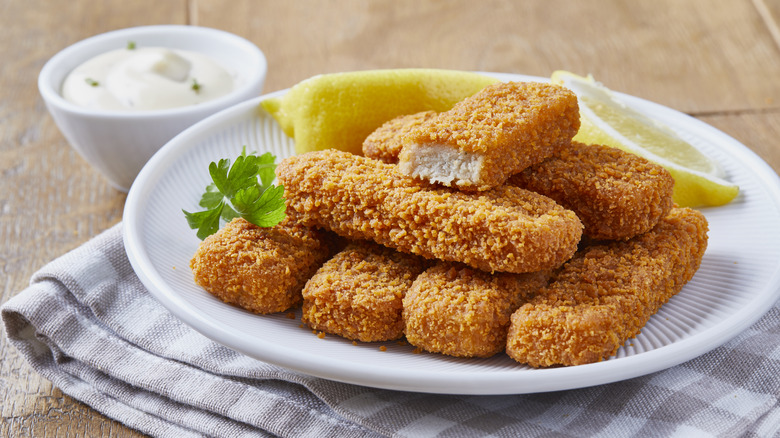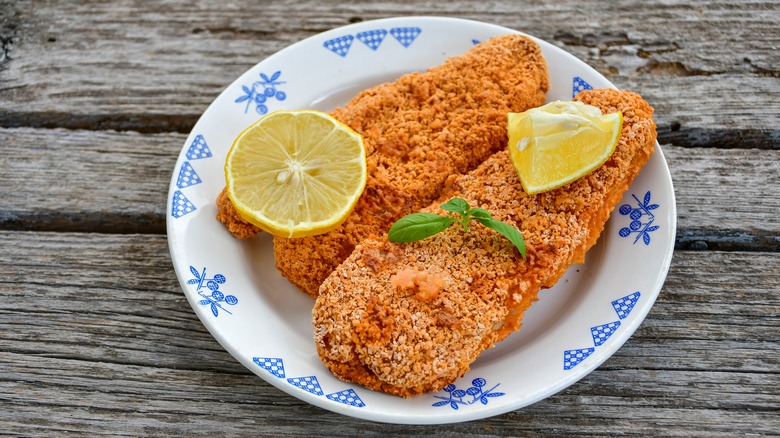The Story Of Fish Sticks Had An Unappetizing Beginning
Fish sticks were never a thing chefs spent hours inventing and nailing down to perfection. They also aren't a delicacy, and there's not one specific country that holds the claim of best fish sticks. If anything, they're a food your parents and school cafeteria workers whipped up when they needed something cheap, fast, and easy to cook. Even so, these wayward, rectangular fish pieces were essential; according to Russian and Soviet History Professor Paul Josephson, they were invented in the 1950s to get rid of excess fish.
Shortly after World War II, boats and other fishing technology underwent massive advancements. To prevent sizable spoilage, companies were tasked with enticing customers with a new fished-based product. Birds Eye owner Clarence Birdseye failed terribly on the first try, crafting a box of scoopable fish Josephson compared to "mangled, unappetizing chunks." It was clear these "fishbricks" were due for an immediate replacement, and after a few changes were made, this replacement came in the recognizable form of fish sticks. But what are you really eating when you eat fish sticks?
Fish sticks are commonly made with Alaska Pollock
When fishbricks were traded for today's fish sticks, they underwent a handful of adjustments to make them more appetizing. Per The Atlantic, this saw the fish cut into rectangles, breaded with batter, and cleared of any bones. The desire for the product finally increased, and soon, Gorton's became the most popular brand in the United States. In fact, in a Mashed poll, the company was ranked the best frozen fish brand by readers.
Though it would be easy to question what you're eating, especially after hearing about the potentially bone-laden fishbrick product, you can be assured that fish sticks are made of actual fish (via Climate.gov). The most commonly used is Alaska Pollock, though other types of white fish have stood in as well. It's no surprise that Alaska Pollock is chosen for this purpose, as it's relatively simple and inexpensive to catch. Sometimes, the fish serves as a stand-in for crab, as it doesn't exhibit a strong flavor like other potential selections.

